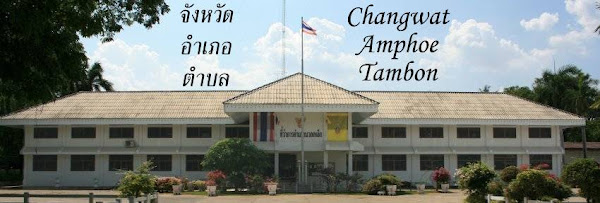- Bua Yai split from Nakhon Ratchasima - จ.บัวใหญ่ แยกมาจากโคราช มี 8 อำเภอ อ.บัวใหญ่, อ.คง, อ.ประทาย, อ.โนนแดง, อ.บ้านเหลือม, อ.แก้งสนามนาง, อ.สีดา และ อ.บัวลาย
- Det Udom split from Ubon Ratchathani - จ.เดชอุดม แยกมาจากอุบลราชธานี มี 5 อำเภอ 2 กิ่งอำเภอ อ.เดชอุดม, อ.บุณฑริก, อ.นาจะหลวย, อ.น้ำยืน, อ.ทุ่งศรีอุดม,กิ่ง อ.น้ำขุ่น และกิ่ง อ.นาเยีย
- Katharalak split from Sisaket - จ.กันทรลักษ์ แยกออกมาจากศรีสะเกษ มี 6 อำเภอ 3 กิ่งอำเภอ อ.กันทรลักษ์, อ.ขุนหาญ, อ.เบญจลักษ์, อ.ศรีรัตนะ, อ.ไพรบึง, อ.โนนคูณ, กิ่ง อ.เขาพระวิหาร, กิ่ง อ.ศรีเมืองทอง และ กิ่ง อ.ทับทิมสยาม
- Chumphae split from Khon Kaen and Chaiyaphum - จ.ชุมแพ แยกมาจากขอนแก่น มี 6 อำเภอ อ.ชุมแพ, อ.ภูเวียง, อ.สีชมพู, อ.หนองนาคำ, อ.ภูผาม่าน และ อ.ภูเขียว ของ จ.ชัยภูมิ มาจัดตั้งเป็น จ.ชุมแพ ด้วย
- Nangrong split from Buriram - จ.นางรอง แยกมาจากบุรีรัมย์ มี 10 อำเภอ อ.นางรอง, อ.ชำนิ, อ.หนองหงส์, อ.บ้านกรวด, อ.เฉลิมพระเกียรติ, อ.โนนสุวรรณ, อ.ปะคำ, อ.หนองกี่, อ.ละหานทราย, และ อ.โนนดินแดง
The other alleged provinces listed I have never heard about, so these might have been from some small local advocate groups but never made it into any official channels. For example, the Kantharalak province is supposed to contain the minor districts which don't exist yet, and in fact since 2007 any newly created districts are supposed to become full districts directly and omit the minor district level.
It would be much more interesting to know the current status of the one province actually about to be created - Mae Sot to be split off from Tak - or the proposal to create Fang province from the north of Chiang Mai which was to be considered by parliament several years ago.


